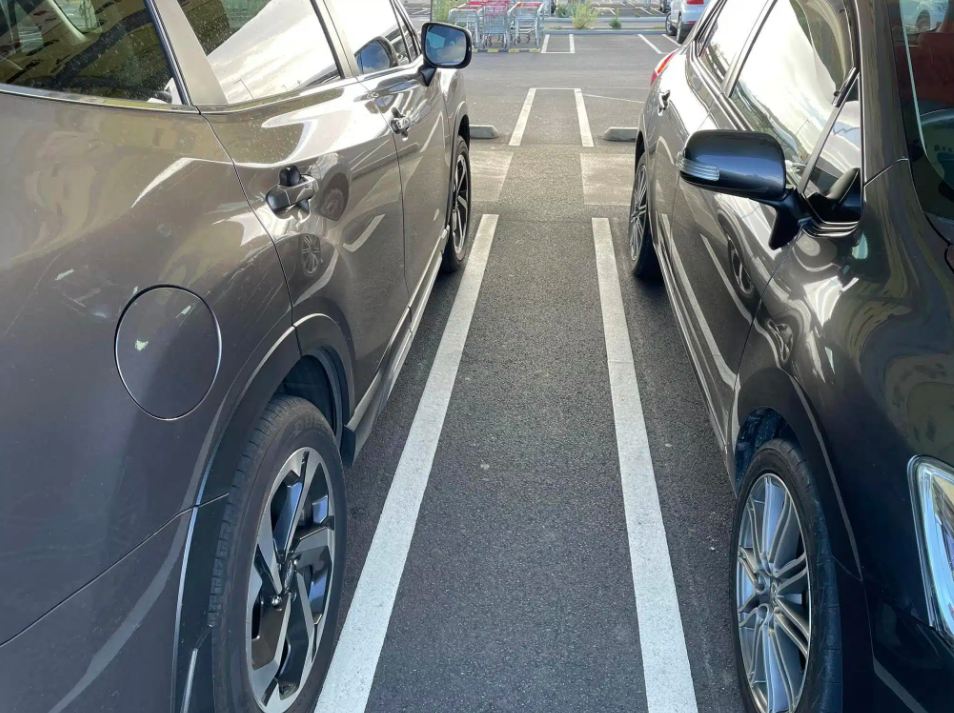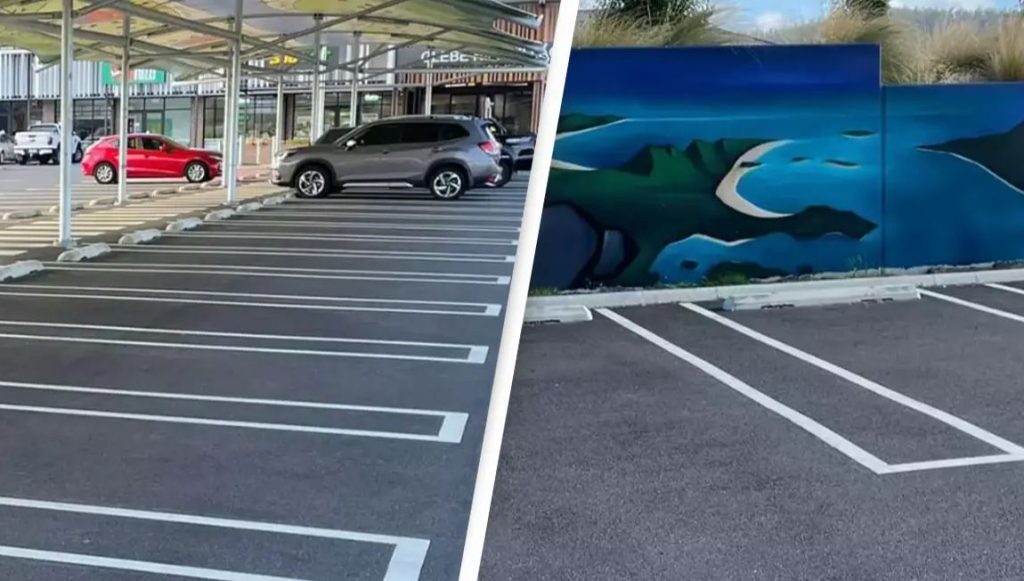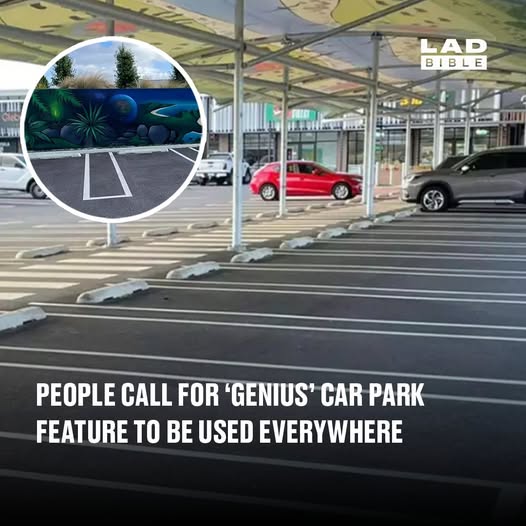A new parking layout at Glebe Hill Shopping Centre in Tasmania, Australia, has attracted attention. People call for genius car park feature to be used everywhere.
How It Works: Extra Space Between Spots
Rather than using the traditional single white line to separate parking bays, Glebe Hill has introduced double-line “buffer zones”: rectangular boxes that effectively create wider gaps on either side of each vehicle. While this configuration reduces the total number of parking spaces, it significantly increases maneuvering and egress space between cars.

Benefits That Drive Praise
1. Easier Parking and Less Stress
Parking in tight spaces is one of the most anxiety-inducing parts of driving. With added room to adjust and view surrounding vehicles, shoppers have described the experience as dramatically less daunting.
2. Fewer Door Dings
A Facebook user from Tasmania Parking Fails shared their excitement:
“All car parks should adopt this method… it gives you a level of confidence… fairly unlikely you will get a ding in your door… 95 percent effective”
Others have echoed this sentiment, praising the design for significantly reducing the risk of dents and damage
3. Better for Families and Accessibility
Parents struggle most when loading car seats or getting children in and out—tasks made much simpler with the extra buffer space. One commenter observed:
“can hardly get your kids out of the car with the way they are now … All places need it”
Public Reaction: “Elite” Design Gaining Traction
Social media response has been overwhelmingly positive:
“The best designed car park I have ever been to.”
“Absolutely elite parking experience here there’s no denying it.”
The idea has even sparked broader discussion. Drivers disillusioned by shrinking standard spaces—especially as vehicles grow larger—are asking: why isn’t this layout already the norm?
The Trade-Off: Fewer Spaces for More Comfort
Of course, the buffer design comes with a compromise. The total number of parking spots is reduced, something many businesses might hesitate to adopt. However, advocates argue the trade-off is worth it: fewer spaces in exchange for better usability, less stress, and lower risk of damage.
Could This Catch On Globally?
It’s not entirely unprecedented. Some UK supermarkets have already experimented with extra-wide bays, and local forums have shared similar ideas. Yet, the idea hasn’t taken off widely—despite its obvious advantages—until Tasmania’s example went viral. This renewed attention raises the question: should urban designers and car park planners update their layouts to accommodate suburban SUVs, parents with strollers, and drivers who dislike cramped spaces?
Final Thoughts: A Simple Fix with Big Impact
The double-line buffer concept at Glebe Hill offers a simple yet powerful solution to persistent parking woes:
➤ Reduced stress during parking
➤ Lower risk of vehicle damage
➤ Better accessibility for families and people with limited mobility
Though it reduces parking capacity, the improved experience—and potentially fewer accidents—could offset this downside. As one commenter aptly put it: “10/10, would recommend to a friend—now can other parking lots please take notes?”

In Summary
Tasmania’s buffer-zone parking design addresses a universal frustration: narrow parking spots. By giving each vehicle breathing room, it minimizes stress, prevents door dings, and boosts usability—especially for families. While businesses may resist losing spaces, the model’s positive reception suggests a smart trade-off. It might just be time for buffer zones to become the global standard.

















